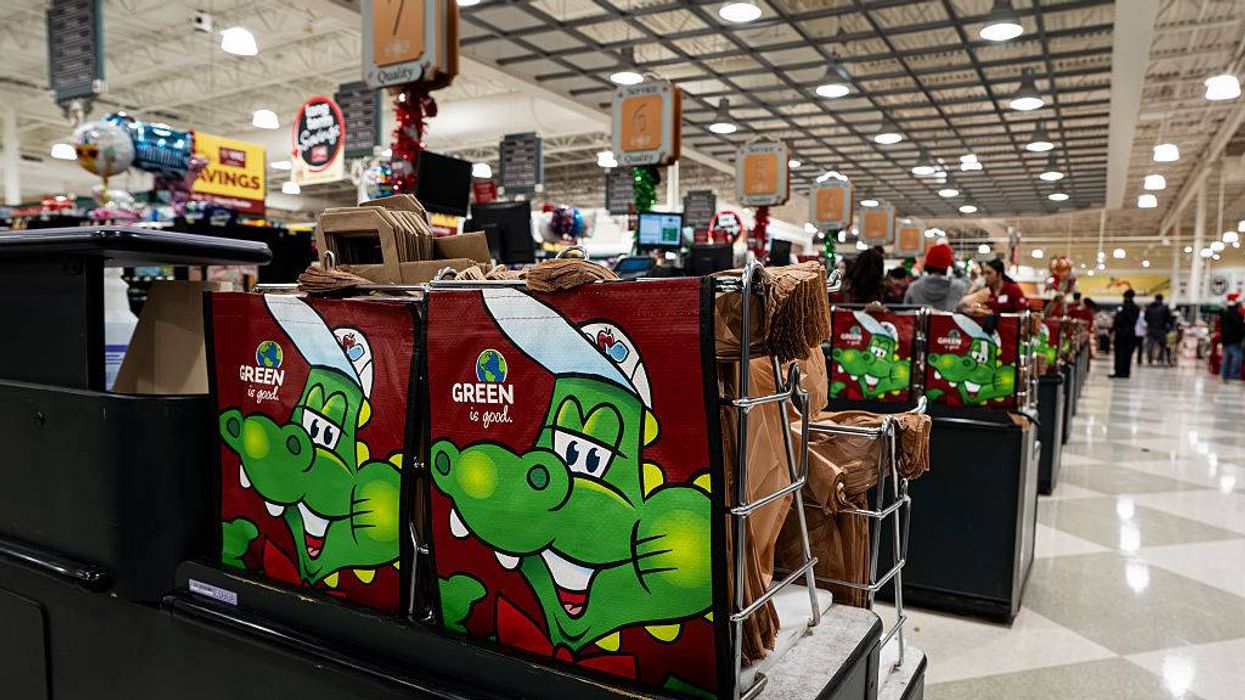October, 29 2010, 12:29pm EDT
For Immediate Release
Contact:
Charles Hall, Justice at Stake, 202-588-9454; chall@justiceatstake.org
Adam Skaggs, Brennan Center for Justice, 646-292-8331; adam.skaggs@nyu.edu
Judicial Elections 2010: TV Spending Surges
Business and Conservatives Outspend Rivals, Reform Groups Report
WASHINGTON
Spending on state Supreme Court TV
ads has exploded nationally as Election Day nears, with $3.3 million
being spent in the week between Oct. 21 and Oct. 27. The TV binge has
raised total ad spending to nearly $13 million for the 2009-10 election
cycle, with business and conservative groups outspending lawyers and
unions in every major state except Illinois.
Several ads have included questionable claims, stirring complaints by editorial pages, a judges association, and www.factcheck.org,
which reviews campaign advertising. Factcheck rejected claims in one
Michigan Democratic ad, while accusing an Illinois group of
cherry-picking cases to attack an incumbent judge.
Through Wednesday, Oct. 27, $8,154,920 has been spent nationally on TV
air time in 2010 judicial elections, including primary and general
election advertising. Of that, $7,152,580 was spent in the general
election, between Aug. 1 and Oct. 27, and $3,391,730 -- 41% of total
spending for the year -- was spent in the seven days from Oct. 21 through
Oct. 27.
"The lion's share of TV spending in judicial campaigns takes place just
before Election Day, and over the past week there has been a dramatic
increase in the volume of TV ads being run in judicial elections across
the country," said Adam Skaggs, Counsel with the Brennan Center for
Justice. "Many of these spots are mudslinging attack ads by candidates
and outside special interests which have been widely denounced as
slanderous and misleading at best."
Including $4.6 million spent on TV ads in 2009, the current total for
the 2009-2010 election cycle is approximately $12.8 million, compared
with around $16 million in the last non-presidential election cycle,
2005-2006. The highest total for TV advertising in a two-year election
cycle occurred in 2007-2008, when candidates, political parties and
outside special interest groups combined to spend $26.6 million on TV
airtime.
Non-candidate groups have led the way.
Three of the top spenders in the Iowa retention election, which has
hinged on a 2009 ruling upholding same-sex marriage, have been national
conservative groups. Of the nearly $1.1 million spent on that election, a
total of $654,000 has come from the National Organization for Marriage,
the Family Research Council, and the Campaign for Working Families,
which has ties with the Family Research Council.
Nationally, four of the top five TV ad spenders in the general election
(Aug. 1 - Oct. 27) are non-candidate groups. The greatest disparities
between non-candidate and candidate general election TV spending are in
Michigan and Ohio.
The following are highlights from the last week of national judicial elections, as updated in Judicial Elections 2010,
a web site jointly operated by the Justice at Stake Campaign and the
Brennan Center for Justice. TV ad information also is available at the
Brennan Center's "Buying Time 2010" page.
National Overview
Illinois Justice Thomas Kilbride, who is seeking another term in a
one-candidate retention election, remains the national leader both in
campaign fundraising, as well as TV ad spending by a candidate. Through
Oct. 28, Kilbride had raised $2.5 million. Of that, $1,425,000 had come
from the Democratic Party of Illinois, whose funding primarily comes
from plaintiffs' lawyers, unions and House Speaker Mike Madigan.
The Illinois Civil Justice League, the group challenging Kilbride, has
raised $648,000, most of it from the U.S. Chamber of Commerce; the
American Justice Partnership, a group closely aligned with the National
Association of Manufacturers; and the American Tort Reform Association.
Kilbride has spent $1,361,550 on TV, more than all but a single
non-candidate group, the Michigan Republican Party. All together, four
of the five biggest spenders are non-candidate groups.
The Michigan Republican Party ranks first overall in TV spending
($1,399,100). Kilbride ranks second; the Partnership for Ohio's Future
ranks third (846,340); the Michigan State Democratic Party ranks fourth
($554,470); and the Law Enforcement Alliance of America ($356,570) ranks
fifth.
In Michigan, the Republican Party and the Law Enforcement Alliance of
America, a Virginia-based interest group, have spent $1.75 million in
support of two Republican candidates, while the Democratic Party has
spent about $554,000 supporting two Democrats. Together, these
non-candidate groups combined to spend $2,310,140 -- 86% of total TV
spending in Michigan -- compared to a total of $366,320 spent by the
candidates.
In Ohio, the Partnership for Ohio's Future is responsible for
approximately 51% of all general election TV spending, underwriting
$846,270 in ad buys supporting Republican candidates Judith Lanzinger
and Maureen O'Connor. The O'Connor and Lanzinger campaigns each spent
an additional $320,000. Democrats Eric Brown and Mary Jane Trapp have
spent a combined $177,490 -- about 10% of all TV spending in Ohio's
supreme court election spending.
Questionable Ads
Factcheck.org has weighed in with a
review of disputed ads in the 2010 election season, in Michigan,
Illinois and Iowa. Citing a Michigan Democratic Party ad that accused
Justice Robert Young of barring suits against polluters, Factcheck says,
"In fact, any citizen directly affected by environmental harm can still
sue."
Factcheck also criticized an Illinois Civil Justice League ad attacking
Kilbride -- an ad also assailed by the Illinois Judges Association as
"ugly" and deceptive. According to Factcheck, the JustPac ad
"cherry-picks cases in its ad to portray Justice Thomas Kilbride as
pro-criminal."
And in Alabama, a newspaper sharply criticized a radio ad by Justice
Thomas Parker, in which Parker suggested that a federal judge, who
struck down the military's "don't ask, don't tell" policy on gay
military personnel, was as great a threat to national security as
al-Quaeda.
Retention Election Spending
Nationally, about $4.3 million has
been spent on retention elections in 2010, driven by races in which
Illinois and Iowa justices face stiff challenges. That is nearly twice
the $2.2 million spent in all retention elections nationally for the
entire 2000-2009 decade, as documented in "The New Politics of Judicial Elections 2000-2009: Decade of Change."
Supreme Court justices also are
being challenged in Colorado, but relatively little money has been
raised in that effort. According to TNS Media Intelligence, about
$130,000 in ads relating to the Colorado high court race have aired
since Aug. 1.
# # #
The Justice at Stake Campaign is a
nonpartisan national partnership working to keep our courts fair,
impartial and free from special-interest and partisan agendas. In states
across America, Campaign partners work to protect our courts through
public education, grass-roots organizing and reform. The Campaign
provides strategic coordination and brings organizational,
communications and research resources to the work of its partners and
allies at the national, state and local levels. For information, visit www.justiceatstake.org.
The Brennan Center for Justice at New York University School of Law is a
nonpartisan public policy and law institute that focuses on fundamental
issues of democracy and justice. The Center works on issues including
judicial independence, voting rights, campaign finance reform, racial
justice in criminal law and presidential power in the fight against
terrorism. Part think tank, part public interest law firm, part advocacy
group, the Brennan Center combines scholarship, legislative and legal
advocacy, and communications to win meaningful, measurable change in the
public sector. For more information, visit www.brennancenter.org.
TV Methodology
All data on ad airings and spending on ads are calculated and prepared
by TNS Media Intelligence/CMAG, which captures satellite data in that
nation's largest media markets. CMAG's calculations do not reflect ad
agency commissions or the costs of producing advertisements. The costs
reported here therefore understate actual expenditures; the estimates
are useful principally for purposes of comparison of relative spending
levels across states.
Click here for PDF version of this release.
We're a nationwide, nonpartisan partnership of more than forty-five judicial, legal and citizen organizations. We've come together because across America, your right to fair and impartial justice is at stake. Judges and citizens are deeply concerned about the growing impact of money and politics on fair and impartial courts. Our mission is to educate the public and work for reforms to keep politics and special interests out of the courtroom--so judges can do their job protecting the Constitution, individual rights and the rule of law.
LATEST NEWS
30th Strike in Trump's High-Seas Kill Spree Claims 2 More Lives
At least 107 people have been killed in US bombings of boats that the Trump administration claims—without evidence—were involved in narco-trafficking in the Caribbean Sea and Pacific Ocean.
Dec 29, 2025
The US military said Monday that two alleged drug smugglers were killed in the bombing of another boat in the eastern Pacific Ocean, but—as has been the case throughout 30 such strikes—offered no verifiable evidence to support its claim.
US Southern Command (SOUTHCOM) said on X that, on orders from Defense Secretary Pete Hegseth, "Joint Task Force Southern Spear conducted a lethal kinetic strike on a vessel operated by Designated Terrorist Organizations in international waters."
"Intelligence confirmed the vessel was transiting along known narco-trafficking routes in the eastern Pacific and was engaged in narco-trafficking operations," SOUTHCOM added. "Two male narco-terrorists were killed. No US military forces were harmed."
According to the Trump administration's figures, at least 107 people have been killed in 30 boat strikes since early September. The administration has tried to justify the strikes to Congress by claiming that the US is in an “armed conflict” with drug cartels, while legal scholars and Democratic US lawmakers counter that the bombings are likely war crimes.
War powers resolutions aimed at reining in President Donald Trump’s ability to extrajudicially execute alleged drug traffickers in or near Venezuela failed to pass the Senate in October and the House earlier this month.
Monday's strike came amid Trump's escalating aggression against Venezuela, including the deployment of warships and thousands of US troops to the region, authorization of covert CIA operations targeting the country's socialist government, and threats to launch ground attacks.
Trump claimed Monday without providing evidence that US forces destroyed a "big facility" in an unspecified country where narco-traffickers' "ships come from."
Keep ReadingShow Less
Trump Bemoans Not Winning Nobel Peace Prize During Netanyahu Hot Mic
The self-described "most anti-war president in history" has ordered the bombing of at least nine nations—more than any US leader in history—and has been indispensable to Israel's genocide in Gaza.
Dec 29, 2025
President Donald Trump—who has bombed more countries than any US leader in history—once again lamented what he considers his snub for the Nobel Peace Prize during a Monday meeting with fugitive Israeli Prime Minister Benjamin Netanyahu.
In an apparent hot mic moment, Trump, seemingly unaware that there were reporters in the room, speaks to Netanyahu and other Israeli and US officials gathered at the president's Mar-a-Lago club in Florida about the "35 years of fighting" between two unspecified countries that he "stopped."
"Do I get credit for it? No," Trump says, adding before being interrupted by Netanyahu, "They gave the Nob..."
As something of a consolation prize, Netanyahu said Monday that he's awarding Trump with the Israel Prize, that nation's highest cultural honor. Trump will be the first foreign leader to receive the award.
Football's global governing body also gave Trump its inaugural—and widely derided—FIFA Peace Prize earlier this month in recognition of the administration's role in brokering an end to international conflicts.
"I did eight of them," Trump said during the hot mic—likely referring to the number of wars he falsely claims to have ended—before seeming to notice the journalists and changing the subject.
Trump ranting to Netanyahu on a hot mic: "Do I get credit for it? No. They gave the Nob-- I did 8 of them. How about India and Pakistan? So I did 8 of them. And then I'll tell you the rest of it."
[image or embed]
— Aaron Rupar (@atrupar.com) December 29, 2025 at 10:57 AM
Trump did nine of them—as in the number of countries he's bombed, breaking former President Barack Obama's record of seven. Over the course of his two terms, Trump has ordered the bombing of Afghanistan, Iran, Iraq, Libya, Nigeria, Pakistan, Somalia, Syria, and Yemen, as well as boats allegedly transporting drugs in the Caribbean Sea and Pacific Ocean.
Thousands of civilians have been killed or wounded during these campaigns, according to experts.
Trump has recently deployed warships and thousands of US troops near Venezuela, which could become the next country attacked by a the self-described "the most anti-war president in history."
The US president has also backed Israel's genocidal war on Gaza, which has left more than 250,000 Palestinians dead, maimed, or missing, and around 2 million others forcibly displaced, starved, or sickened. Israel's conduct in the war is the subject of an ongoing International Court of Justice genocide case filed by South Africa.
Meanwhile, Netanyahu and his former defense minister Yoav Gallant are wanted by the International Criminal Court for alleged war crimes and crimes against humanity in Gaza, including murder and forced starvation.
“He is a wartime prime minister. He’s done a phenomenal job," Trump said while standing with Netanyahu later on Monday. "He’s taken Israel through a very dangerous period of trauma."
He is also accused of prolonging the Gaza war to forestall a reckoning in his domestic corruption trial, in which Trump has intervened by requesting a pardon.
“Israel, with other people, might not exist right now," Trump added. "If you had the wrong prime minister, Israel right now would not exist.”
Keep ReadingShow Less
New State Laws Aim to Protect Environment, Consumers as Trump Wages All-Out War on Climate
"The gridlock and partisanship we see in Washington, DC can be dispiriting. But history shows that states can build momentum that eventually leads to change at the federal level."
Dec 29, 2025
Even as President Donald Trump and his administration have been ripping up environmental and consumer protection regulations, a number of state laws are set to take effect next year that could at least mitigate some of the damage.
A Monday statement from Environment America and the Public Interest Network highlighted a number of new laws aimed at curbing corporate polluters and enhancing consumer welfare.
First, the groups highlighted "Right to Repair" laws set to take effect in Washington, Nevada, Oregon, and Colorado, which give people the right to repair their own appliances and electronics without burdensome costs or barriers.
The groups lavished particular praise on Colorado's "Right to Repair" laws that they said provide "the broadest repair protections in the country," with new regulations that will give businesses in the state "access to what they and independent repair providers need to fix their electronics themselves."
Illinois, meanwhile, will fully phase out the sale of fluorescent lightbulbs, which will be replaced by energy-efficient LED bulbs. The groups estimate that eliminating the fluorescent bulbs will collectively save Illinois households more than $1.5 billion on their utility bills by 2050, while also reducing energy waste and mercury pollution.
Illinois also drew praise for enacting a ban on polystyrene foam foodware that will take effect on January 1.
The groups also highlighted the work being done in Oregon to protect consumers with legislation mandating price transparency to eliminate surprise junk fees on purchases; prohibiting ambulance companies from socking out-of-network patients with massive fees for rides to nearby hospitals; and placing new restrictions on the ability of medical debt to negatively impact a person's credit score.
California also got a mention in the groups' release for closing a loophole that allowed supermarkets to continue using plastic bags and for creating a new privacy tool for consumers allowing them to request that online data brokers delete all of the personal information they have gathered on them over the years.
Emily Rusch, vice president and senior director of state offices for the Public Interest Network, contrasted the action being taken in the states to protect consumers and the environment with a lack of action being done at the federal level.
"The gridlock and partisanship we see in Washington, DC can be dispiriting," said Rusch. "But history shows that states can build momentum that eventually leads to change at the federal level. As we build on this progress in 2026, we look forward to working with anyone—Republican, Democrat, or independent—with whom we can find common ground."
Keep ReadingShow Less
Most Popular


